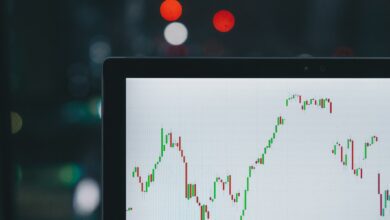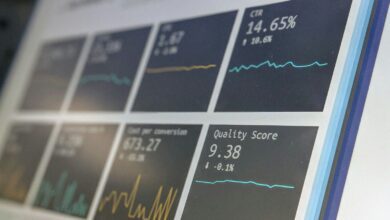Balance sheet – company financial position

Analyzing the statement of assets and obligations provides a precise snapshot of an enterprise’s resources and claims at a given moment. Key indicators such as equity and liabilities reveal how much capital is internally financed versus externally owed, directly influencing solvency and risk assessments. Maintaining a favorable ratio between these elements ensures sustainable growth and operational stability.
Examining liquidity and leverage ratios derived from this report offers actionable insights into short-term flexibility and long-term commitments. For instance, a high proportion of liabilities relative to net worth may signal potential distress or aggressive expansion strategies. Conversely, robust equity levels indicate solid foundations for future investments without excessive borrowing.
Regular scrutiny of this financial document enables stakeholders to gauge asset allocation efficiency alongside debt management practices. Integrating trend analysis with current market conditions supports informed decision-making, optimizing capital structure while mitigating exposure to economic fluctuations. This approach fortifies the overall fiscal stature and competitive edge within the industry sector.
Balance Sheet: Company Financial Position [Investment Insights investment-insights]
Analyzing an organization’s statement of financial standing requires precise evaluation of its asset composition, liability structure, and equity distribution. A strong asset base combined with manageable obligations often signals resilience and operational flexibility. For instance, a firm exhibiting a high ratio of current assets to current liabilities demonstrates liquidity that can support short-term commitments without compromising strategic initiatives.
Equity represents residual interest after settling debts and obligations, serving as a crucial indicator of net worth. In sectors such as blockchain startups, where intangible assets like intellectual property dominate, traditional assessments must adjust to accommodate valuation challenges. Investors should scrutinize how these non-physical resources influence overall net asset value and stakeholder equity.
Structural Components and Their Implications
The foundational elements include tangible holdings (property, equipment), receivables, cash reserves, alongside payables and long-term debts. Evaluating these categories provides insight into solvency and capital allocation efficiency. Consider a technology firm whose liabilities significantly exceed liquid assets; this imbalance raises concerns about potential refinancing risks or impaired creditworthiness.
Case studies from decentralized finance (DeFi) enterprises reveal diverse approaches to managing obligations versus holdings. Some platforms maintain substantial crypto reserves as liquid assets against fiat-denominated liabilities, introducing currency volatility considerations into their valuation models. Such scenarios necessitate integrating market risk factors when interpreting the documented financial outline.
- Assets: Current (cash equivalents, inventories) and non-current (fixed assets, investments).
- Liabilities: Short-term payables and long-term debt instruments.
- Equity: Share capital plus retained earnings reflecting accumulated profitability.
An effective assessment also involves ratio analysis–debt-to-equity ratios reveal leverage levels influencing risk profiles. For example, a balance sheet showing a debt-to-equity ratio above 1 indicates higher reliance on borrowed funds which may amplify returns but increase vulnerability during economic downturns.
Regulatory frameworks increasingly mandate transparency in reporting digital asset holdings within official financial disclosures. This trend enhances investor confidence by standardizing recognition criteria for cryptocurrencies as either intangible assets or inventory depending on usage context. Monitoring such compliance developments is essential for accurate interpretation of an entity’s comprehensive position statement.
Interpreting Assets Structure
Analyzing the composition of assets on a statement is critical for assessing an entity’s resource allocation and operational efficiency. The distribution between current and non-current assets highlights liquidity levels and investment in long-term projects, directly influencing solvency ratios such as the current ratio and quick ratio. A higher proportion of liquid assets strengthens short-term obligations coverage, while significant fixed asset holdings often indicate capital intensity and potential depreciation impact.
Evaluating asset structure also involves examining the relationship between total resources and obligations to creditors (liabilities) alongside owners’ stake (equity). The debt-to-assets ratio provides insight into leverage by comparing liabilities against total assets, reflecting risk exposure and financial flexibility. An optimal mix balances risk with growth opportunities, avoiding excessive reliance on external funding that could constrain future operations or increase vulnerability during economic downturns.
Key Components Impacting Asset Interpretation
Current assets typically include cash equivalents, marketable securities, receivables, and inventory. For example, a blockchain infrastructure firm holding substantial digital tokens as current assets must consider volatility risks affecting valuation accuracy. Non-current assets encompass property, plant, equipment, intangible assets like patents or software licenses–critical for companies investing heavily in technology development. Monitoring amortization schedules and impairment risks ensures realistic reporting.
Comparative analysis using ratios such as return on assets (ROA) or asset turnover offers additional clarity on how effectively resources generate revenue relative to their book value. For instance, a fintech enterprise demonstrating high asset turnover but low equity might be operating efficiently yet exposed to financing pressures. Integrating these metrics with trend data over multiple periods reveals shifts in strategic focus or operational health.
- Liquidity Ratios: Indicate capacity to meet short-term liabilities through readily convertible assets.
- Leverage Ratios: Measure dependency on borrowed funds versus owned resources.
- Profitability Ratios: Assess returns generated from total resource investment.
The evolving regulatory environment around digital asset classification further complicates asset interpretation. Recent standards require clear disclosure of cryptocurrencies under intangible assets or inventory depending on business model application–affecting valuation methods and impairments recognized on statements. Such nuances necessitate specialized expertise when reviewing entities operating within decentralized finance sectors or crypto exchanges.
In conclusion, dissecting asset makeup demands integration of quantitative ratios with qualitative understanding of industry-specific factors and accounting policies. Stakeholders should prioritize transparency in disclosures relating to asset valuations, depreciation methodologies, and contingent liabilities that may distort apparent net worth or liquidity buffers. Strategic insights derived from these analyses support informed decision-making regarding creditworthiness, investment potential, and sustainable growth trajectories.
Evaluating Liabilities Impact
Analyzing the influence of obligations on an entity’s financial statement requires precise scrutiny of debt levels relative to total holdings. Elevated commitments can constrain operational flexibility, reducing net worth by increasing leverage ratios and diminishing shareholder claims. For instance, a firm with $500 million in assets and $350 million in liabilities retains equity of $150 million, reflecting a 30% leverage ratio that may signal heightened risk exposure compared to peers maintaining under 20%.
Incorporating liabilities into asset valuation reveals potential liquidity challenges and solvency risks. Short-term debts demand immediate settlement, pressuring cash flows and possibly triggering refinancing events at less favorable rates. Evaluations must consider maturity profiles alongside interest obligations; a technology enterprise carrying $200 million in long-term loans with fixed low rates faces different strategic implications than a retail business dependent on revolving credit lines subject to variable market conditions.
Technical Analysis of Debt Structures
Examining the composition of financial commitments provides insights into capital structure optimization. Fixed-rate bonds versus floating-rate notes introduce varying degrees of interest rate sensitivity, influencing earnings volatility. For example, companies employing convertible debt instruments can dilute equity but gain lower financing costs, altering the net asset value distribution seen on statements. A blockchain startup securing venture debt might prefer such hybrid arrangements to balance growth funding against ownership dilution.
Comparative case studies illustrate how liability management affects net worth trajectories over fiscal cycles. Consider firms operating in cryptocurrency mining: those heavily financed through traditional bank loans face pressure from fluctuating energy prices impacting asset valuation, while entities utilizing tokenized debt instruments benefit from enhanced liquidity and transparent covenants embedded in smart contracts. This dynamic interaction between obligations and resource control reshapes equity positioning and informs investor confidence metrics within evolving regulatory frameworks.
Analyzing Equity Components
Evaluating the equity section within a statement of assets and obligations provides critical insight into an enterprise’s net worth and capital structure. Equity represents the residual interest after deducting liabilities from total resources, reflecting ownership claims held by shareholders or partners. Accurate interpretation of this segment enables investors to assess solvency, growth potential, and the allocation of retained earnings versus contributed capital.
Equity is composed primarily of share capital, additional paid-in capital, retained earnings, treasury shares, and accumulated other comprehensive income. Each component contributes distinctively to the overall financial stance, influencing leverage ratios and return metrics. For instance, a high proportion of retained earnings indicates reinvested profits supporting expansion without external debt reliance.
Dissecting Share Capital and Paid-In Capital
Share capital denotes the nominal value of issued shares, establishing a firm’s foundational funding level. Additional paid-in capital represents amounts received above par value during issuance events such as initial public offerings or private placements. These elements solidify permanent funding layers distinct from borrowed funds. Analyzing changes in these figures over reporting periods reveals strategic financing decisions impacting asset acquisition and liquidity management.
Retained Earnings: Indicator of Profit Allocation
Retained earnings accumulate undistributed profits after dividends are paid to shareholders. This reserve serves as an internal source for funding operations or long-term projects without incurring new liabilities. A growing retained earnings balance can signify operational success but requires scrutiny alongside cash flow statements to confirm actual liquidity improvements rather than mere accounting accruals.
Treasury Shares and Their Impact on Net Worth
Treasury shares reflect stock repurchased by the enterprise, reducing outstanding equity claims and potentially enhancing per-share valuation metrics. While buybacks may signal confidence in undervalued stock or optimize capital structure, excessive repurchases could constrain future investment capacity or indicate limited growth opportunities. Assessing treasury shares relative to total equity aids in understanding management’s strategic priorities.
Utilizing Ratios for Comprehensive Assessment
Key ratios such as debt-to-equity, return on equity (ROE), and equity multiplier provide quantitative measures linking assets, liabilities, and owners’ claims. For example:
- Debt-to-Equity Ratio: Measures leverage by comparing obligations against net assets attributable to owners.
- Return on Equity: Indicates profitability generated per unit of invested owner funds.
- Equity Multiplier: Assesses financial leverage by showing asset coverage via shareholder funds.
An integrated approach combining these ratios with component analysis delivers nuanced perspectives on financial health and risk exposure amid market fluctuations.
Assessing Liquidity Ratios
Liquidity ratios provide critical insight into an entity’s ability to fulfill short-term obligations using its readily available assets. The current ratio, defined as current assets divided by current liabilities, serves as a primary indicator of solvency in the near term. For instance, a current ratio above 1.5 is generally interpreted as a strong liquidity position, allowing operational flexibility and reducing refinancing risks. Conversely, ratios below 1 may signal potential distress requiring immediate corrective measures.
Another key metric, the quick ratio (or acid-test ratio), refines this analysis by excluding inventory from assets due to its lower liquidity. This measure is particularly relevant in sectors where inventory turnover is slow or unpredictable. A quick ratio around 1 or higher suggests sufficient liquid resources are available without relying on asset liquidation that could disrupt ongoing operations or equity stability.
Technical Evaluation of Short-Term Solvency
The cash ratio offers the most conservative perspective by comparing only cash and cash equivalents against current liabilities. This ratio is pivotal for entities operating in volatile markets or with fluctuating revenue streams, such as blockchain startups managing digital assets alongside traditional holdings. For example, firms exhibiting cash ratios consistently below 0.2 might face challenges covering immediate payables without resorting to external financing or asset sales impacting shareholders’ equity.
Examining these ratios in aggregate reveals nuances about leverage embedded within the statement of financial condition. An elevated level of short-term debt relative to equity can artificially inflate liquidity but increase vulnerability if capital markets tighten. Case studies from recent market fluctuations illustrate how companies with strong liquidity metrics but weak overall leverage profiles maintained operational resilience, contrasting with those over-leveraged despite nominally adequate ratios.
Integrating liquidity analysis with other solvency indicators enhances predictive accuracy regarding fiscal health and strategic decision-making. Monitoring trends over successive reporting periods uncovers shifts in asset composition and liability structure that affect net worth sustainability. Practical application includes scenario modeling under regulatory changes affecting asset valuation and liability recognition, guiding stakeholders towards informed evaluations of enterprise viability amid evolving economic conditions.
Conclusion on Identifying Financial Risks
Prioritizing the analysis of equity and liabilities is imperative to gauge the resilience of an enterprise’s financial framework. Dissecting key ratios such as debt-to-equity and asset turnover reveals hidden vulnerabilities within the structure of obligations and resources, directly influencing strategic decision-making and risk mitigation.
Evaluating the composition and quality of assets alongside leverage metrics allows for a nuanced understanding of solvency and liquidity challenges. For instance, a deteriorating current ratio paired with rising long-term liabilities signals heightened exposure to refinancing risks, underscoring the necessity for proactive capital restructuring.
Strategic Implications and Future Outlook
- Equity Dynamics: Shifts in shareholder equity reflect not only retained earnings but also market sentiment toward growth prospects, demanding continuous monitoring through comprehensive ratio analysis.
- Liabilities Profiling: Differentiating between fixed and variable obligations aids in stress-testing scenarios against macroeconomic fluctuations or regulatory adjustments.
- Asset Quality Assessment: Incorporation of intangible assets valuation, especially in blockchain-related ventures, presents evolving complexities that traditional frameworks must adapt to.
The trajectory of financial transparency will increasingly intertwine with blockchain verification systems, enhancing real-time accuracy in reporting asset integrity and liability commitments. Forward-looking enterprises should integrate decentralized ledger technologies to refine risk identification processes, fostering resilience amid tightening regulatory environments and accelerating innovation cycles.
Ultimately, synthesizing multidimensional ratios alongside qualitative insights equips stakeholders with robust intelligence to anticipate disruptions. This analytical rigor not only fortifies capital allocation strategies but also positions entities advantageously within competitive markets shaped by rapid technological advancements and evolving economic parameters.






